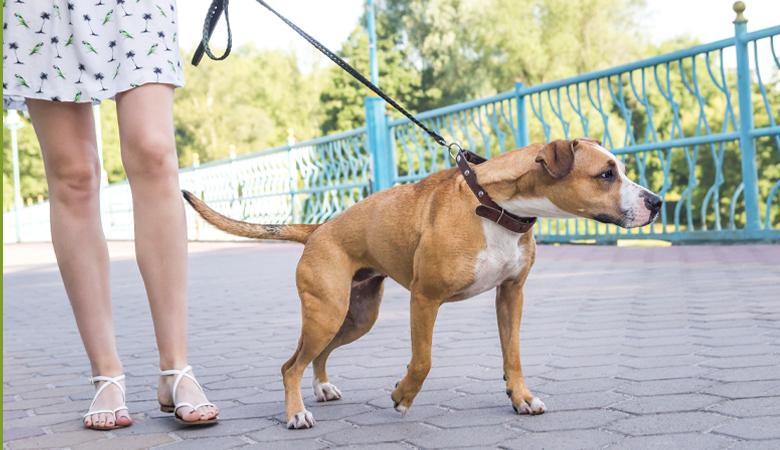Title: Navigating the Tug of War: Understanding Dog Pulling on the Leash
Introduction:
Picture this: a serene afternoon walk, the sun filtering through the trees, and the promise of adventure just beyond the next corner. But instead of basking in the joy of a leisurely stroll, you find yourself engaged in a tug of war with your furry companion, who seems to have other plans entirely. The leash stretches taut, your patience is tested, and suddenly, the tranquility of the moment dissipates into a frenzied game of “who leads the way.” For many dog owners, the experience of a pulling pup is all too familiar. But why do our four-legged friends feel the need to take charge of the walk, and how can we transform this daily struggle into a harmonious experience? In this article, we will explore the reasons behind leash pulling, the impact it has on both dog and owner, and provide practical strategies to foster more enjoyable outings. Join us as we delve into the world of leash behavior, turning the tug of war into a graceful dance of companionship.
Table of Contents
- Understanding the Root Causes of Leash Pulling Behavior
- Effective Training Techniques to Curb Pulling on Walks
- Choosing the Right Equipment for a More Enjoyable Experience
- Creating Consistent Walking Routines for Lasting Change
- Q&A
- The Conclusion
Understanding the Root Causes of Leash Pulling Behavior
Leash pulling is a common issue many dog owners face, and its roots can be traced to various behavioral instincts and environmental factors. Dogs are naturally curious creatures, driven by their senses. When they catch a whiff of an intriguing scent or spot a potential playmate, their instinct is to rush toward it, often resulting in a strain on the leash. Additionally, the level of pedestrian traffic, other animals, and even the environment’s distractions all play significant roles in exacerbating this behavior. Understanding these stimuli can help owners identify the triggers that lead their dogs to pull on the leash.
Another contributing factor to leash pulling can be linked to the dog’s training and socialization during their formative months. Dogs that haven’t been taught leash manners or have had limited exposure to various environments might not grasp the concept of walking calmly beside their owners. Consider the following underlying causes:
- Excitement: Dogs often pull when they are overly excited about their surroundings.
- Anxiety: Dogs may pull in response to nervousness, wanting to escape or investigate a perceived threat.
- Lack of training: If a dog hasn’t been properly trained to walk on a leash, pulling can become a habitual reaction.
- Reinforcement: If pulling gets the dog to where it wants to go, it can inadvertently reinforce this behavior.
Effective Training Techniques to Curb Pulling on Walks
Teaching your dog to walk politely on a leash requires consistency and patience. Start by utilizing positive reinforcement techniques, such as treats or praise, to reward your furry friend for walking calmly beside you. This method encourages your dog to associate calm walking with positive outcomes. You can also try the “stop and go” technique: whenever your dog begins to pull, stop immediately. Wait for them to return to your side before continuing. This simple action reinforces the idea that pulling will not get them where they want to go.
Incorporate engaging activities during your walks to keep your dog focused on you rather than the distractions around them. Use a combination of short training sessions and play breaks to maintain your dog’s interest. Consider the following tips for effective walking sessions:
- Change Directions: Randomly change the direction you’re walking to encourage your dog to pay attention to you.
- Use an Appropriate Harness: Invest in a no-pull harness that discourages pulling without discomfort.
- Practice Loose Leash Walking: Dedicate time to practice walking with a loose leash in a low-distraction environment.
Choosing the Right Equipment for a More Enjoyable Experience
Choosing the right equipment can significantly enhance your experience when dealing with your dog’s pulling on the leash. Opting for the correct harness or collar not only ensures the safety of your furry companion but also makes walks a more enjoyable occasion for both of you. Here are some recommended gear options:
- Front-clip harness: This redirects your dog’s attention and discourages pulling.
- Head halter: A gentle control tool that lets you steer your dog more easily.
- Slip collar: A traditional option that tightens when the dog pulls, requiring proper training to be effective.
In addition to the equipment, selecting an appropriate leash can make a world of difference. A shorter, sturdy leash provides better control, while a retractable leash can offer your dog more freedom. Here’s a simple comparison:
| Leash Type | Pros | Cons |
|---|---|---|
| Standard Leash | Durable, offers good control | Less freedom for the dog |
| Retractable Leash | Allows distance and exploration | Can lead to pulling, may tangle |
Creating Consistent Walking Routines for Lasting Change
Establishing a regular walking routine is essential for both you and your dog, especially if you’re working on discouraging leash pulling. Consistency not only promotes good behavior but also strengthens the bond between you and your furry friend. Here are some tips to create effective walking habits:
- Choose Specific Times: Designate a set time each day for walks. Dogs thrive on routine, and knowing when to expect their daily outing can help reduce excitement and anxiety.
- Start Slow: If your dog is particularly prone to pulling, begin your walks in a low-distraction environment. Gradually introduce busier settings as their training improves.
- Use Positive Reinforcement: Reward your dog with treats or praise when they walk calmly beside you, reinforcing the behavior you want to see.
- Switch Directions: If your dog starts pulling, change directions unexpectedly to regain their focus and encourage them to pay attention to you.
Implementing a simple tracking system can also help you monitor progress over time. Consider using a table to record key metrics that reflect changes in your dog’s walking behavior.
| Date | Duration (mins) | Pulling (1-5 scale) | Positive Reinforcements Given |
|---|---|---|---|
| 10/01 | 30 | 4 | 3 Treats |
| 10/08 | 35 | 3 | 4 Treats |
| 10/15 | 40 | 2 | 5 Treats |
This systematic approach will help you visualize improvements and make adjustments to your routine as needed. With dedication and patience, you’ll not only manage leash pulling but also create a positive walking experience that can lead to lasting change for both you and your dog.
Q&A
Q&A: Understanding and Addressing Dog Pulling on Leash
Q1: Why does my dog pull on the leash during walks?
A1: Dogs often pull on the leash out of excitement or the natural instinct to explore their surroundings. The pull can be a response to newfound smells, sights, or the simple thrill of being outside. For some breeds, this behavior is more pronounced due to their history as working or hunting dogs.
Q2: Is leash pulling considered a bad behavior?
A2: Leash pulling can be frustrating for owners and may lead to safety concerns, particularly in busy or unpredictable environments. While pulling itself isn’t inherently bad, it can make walks less enjoyable and potentially cause physical strain on both the dog and the owner. Thus, it’s often preferable to teach a dog more polite leash manners.
Q3: How can I train my dog not to pull on the leash?
A3: Training your dog to walk nicely on a leash takes patience and consistency. Techniques include using positive reinforcement, like treats and praise, when your dog walks beside you calmly. You might also consider employing the “stop and go” technique: when your dog pulls, stop walking until they return to your side. Alternatively, try switching directions whenever they start to pull, encouraging them to focus on you.
Q4: Are there specific equipment options to help with leash pulling?
A4: Yes, various tools can assist in managing pulling. Harnesses designed to deter pulling, such as front-clip harnesses, can redirect your dog’s attention back to you. Head halters also provide more control. However, it’s crucial to ensure that any equipment fits properly and doesn’t cause discomfort to your dog.
Q5: How long will it take for my dog to learn not to pull?
A5: The duration of leash training varies based on the dog’s temperament, age, and prior experiences. With consistent practice and positive reinforcement, you may start to see improvements within a few weeks. However, remember that every dog is unique, and some may take longer than others to form new habits.
Q6: What should I do if my dog pulls excessively?
A6: If your dog’s pulling becomes excessive or difficult to manage, consider seeking the help of a professional dog trainer or attending a training class. They can provide tailored guidance and help address behavioral issues in a supportive environment, ensuring both you and your dog have a positive experience during walks.
Q7: Are there benefits to teaching my dog to walk nicely on a leash?
A7: Absolutely! Teaching your dog to walk politely on a leash enhances your bond, makes walks more enjoyable, and reduces the risk of accidents. A well-trained dog is a joy to walk, allowing for better social interactions and a more relaxed experience for both of you.
Q8: Can leash pulling indicate other behavioral issues?
A8: In some cases, leash pulling can be a sign of underlying anxiety, fear, or over-excitement. If you notice your dog displays nervous behaviors or seems overly reactive during walks, it may be beneficial to consult with a veterinarian or an animal behaviorist to address any underlying issues comprehensively.
—
With some persistence and creative training strategies, you can transform your walk from a tug-of-war into a harmonious stroll with your canine companion!
The Conclusion
the journey towards a harmonious walk with your dog begins with understanding and patience. While the sight of a dog enthusiastically pulling at the leash may spark frustration, it also offers an opportunity for growth—for both you and your furry friend. By implementing positive reinforcement techniques, consistent training, and a deeper awareness of your dog’s instincts, you can transform those exuberant pulls into a more enjoyable and connected walking experience. Remember, walking isn’t just an exercise; it’s a moment of exploration and bonding. With perseverance and the right approach, you will not only navigate the leash more effectively but also unlock the potential for a stronger relationship with your canine companion. So, embrace the challenges, celebrate the victories, and enjoy every step of your journey together. Happy walking!



